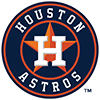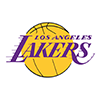Using Vegas data as a predictive element in daily fantasy sports is something that most sharp players do, but as more players rely on Vegas it becomes more of a challenge to find players who are under-owned.
I rely on Vegas data quite a bit because of the strong correlation between the numbers and the actual fantasy performance. While you don't want to use it blindly, it should be an indicator of where you want to go each day.
I use pivot tables in Excel to correlate multiple data sets. An example of this would be taking the DraftKings salaries, fantasy points and the over/unders in Vegas to see from where the highest performance scenarios come.
Before I get granular this week, I want to set the table first with some basic scoring measurements for DraftKings scoring that will allow you to build a system for selecting pitchers.
The main focus this week will be on the moneylines, salaries and fantasy points. The average moneyline range in baseball falls between -110 to -119 and +110 to +119; 52 percent of moneylines will fall between -100 to -129 and +100 to +129.
You can see that -110 to -119, +110 to +119 and +101 to +109 are the most common moneyline ranges. I look for pitchers in games with at least -140 and totals of 7 or less, and hitters in games with -140 or higher and a total of 9 or higher as a top priority. If there are not many games in that data set, then you move to 7.5 on pitching and 8.5 on hitting.
Here is a chart with the moneyline ranges and their frequencies:
| MONEY LINE | COUNT | PERCENT |
| -110 – -119 | 183 | 9.7 |
| +110 – +119 | 177 | 9.4 |
| +101 – +109 | 174 | 9.2 |
| -100 – -109 | 160 | 8.5 |
| -120 – -129 | 158 | 8.4 |
| +120 – +129 | 129 | 6.8 |
| -130 – -139 | 118 | 6.3 |
| -140 – -149 | 95 | 5.0 |
| +130 – +139 | 92 | 4.9 |
| -200 – -400 | 73 | 3.9 |
| +150 – +159 | 66 | 3.5 |
| +140 – +149 | 63 | 3.3 |
| -150 – -159 | 61 | 3.2 |
| -160 – -169 | 61 | 3.2 |
| +200 – +377 | 48 | 2.5 |
| -180 – -189 | 44 | 2.3 |
| +160 – +169 | 43 | 2.3 |
| -170 – -179 | 40 | 2.1 |
| +170 – +179 | 39 | 2.1 |
| -190 – -199 | 29 | 1.5 |
| +180 – +189 | 24 | 1.3 |
| +190 – +199 | 9 | 0.5 |
| Grand Total | 1,886 | 100 |
DraftKings pitcher salaries range from $4,000 - $14,200. I look at salaries in $1,000 buckets until I get to $11,000 and then we take $11,000-$14,200 because the sample size is pretty small in that area.
We can use a pivot table to look at the totals, salaries and performance at each tier and look to see where the best value is.
| MONEY LINE/SALARY | $4,000-4,900 | $5,000-5,900 | $6,000-6,900 | $7,000-7,900 | $8,000-8,900 | $9,000-9,900 | $10,000-10,900 | $11,000-14,200 | GRAND TOTAL |
| -200 – -400 | 14.95 | 0.20 | 13.30 | 20.29 | 23.13 | 24.83 | 26.77 | 24.47 | |
| -180 – -189 | 10.08 | 18.60 | 13.08 | 21.40 | 16.21 | 20.16 | 13.30 | 24.14 | 20.06 |
| -140 – -149 | 8.77 | 19.24 | 19.86 | 14.97 | 21.78 | 14.86 | 20.38 | 23.46 | 18.7 |
| -160 – -169 | -8.80 | 15.06 | 12.58 | 13.14 | 12.51 | 20.83 | 12.02 | 28.10 | 17.07 |
| -190 – -199 | 21.30 | 19.17 | 11.18 | 7.65 | 17.76 | 19.45 | 18.66 | 16.96 | |
| -150 – -159 | 20.13 | 12.82 | 19.43 | 22.12 | 12.30 | 14.18 | 16.22 | 14.82 | 16.16 |
| -170 – -179 | 8.86 | 23.27 | 25.55 | 12.62 | 12.96 | 10.90 | 17.18 | 20.35 | 16.02 |
| -110 – -119 | 14.26 | 12.43 | 15.06 | 15.85 | 16.76 | 16.28 | 14.29 | 23.55 | 15.84 |
| -130 – -139 | 12.08 | 8.88 | 11.60 | 16.58 | 17.03 | 11.92 | 20.27 | 27.58 | 15.49 |
| +101 – -+109 | 11.73 | 9.92 | 14.30 | 15.20 | 13.89 | 16.32 | 18.84 | 31.18 | 13.85 |
| -120 – -129 | 10.72 | 10.81 | 11.97 | 11.88 | 16.67 | 12.00 | 14.41 | 25.02 | 13.48 |
| +110 – -+119 | 9.27 | 9.94 | 10.38 | 13.43 | 18.22 | 19.30 | 12.03 | 21.31 | 13.41 |
| -100 – -109 | 5.11 | 7.81 | 12.73 | 15.01 | 14.25 | 16.15 | 14.64 | 22.66 | 13.23 |
| +120 – -+129 | 7.67 | 9.98 | 11.41 | 13.11 | 9.91 | 12.04 | 25.27 | 20.80 | 11.55 |
| +170 – -+179 | 9.01 | 13.41 | 12.19 | 15.53 | 7.57 | 2.47 | 11.28 | ||
| +140 – -+149 | 3.86 | 6.86 | 13.07 | 10.21 | 19.44 | 15.95 | 30.40 | 20.63 | 10.93 |
| +190 – -+199 | 3.42 | 14.99 | 12.85 | 13.25 | 10.46 | ||||
| +150 – -+159 | 12.75 | 9.00 | 6.55 | 7.97 | 21.04 | 23.20 | 14.50 | 10.36 | |
| +160 – -+169 | 7.49 | 5.73 | 7.80 | 16.89 | 18.88 | 10.1 | |||
| +180 – -+189 | 6.24 | 14.36 | 9.15 | 11.37 | 1.58 | 10.01 | |||
| +130 – -+139 | 5.21 | 7.66 | 7.54 | 9.75 | 21.57 | 10.93 | -7.00 | 37.80 | 9.24 |
| +200 – -+377 | 4.98 | 9.04 | 7.72 | 12.85 | 2.73 | 33.90 | 9.13 | ||
| Grand Total | 8.33 | 10.12 | 11.84 | 14.20 | 15.49 | 15.74 | 17.06 | 24.12 | 14.17 |
You can see where it is very hard to find value on pitchers less than $9,000, but if you are going to spend below that threshold, you need to make sure that the moneyline is at least -140. Pitchers between $11,000-$14,200 offer the best return and are often worth the money. But the challenge is fitting two starting pitchers in your lineup who are priced in that tier. A lot of people have a threshold of $20,000 on starting pitching, which leaves $30,000 for eight hitters. If you have a slate where you can plug in a couple of $2,000-$2,500 hitters, then you can take that savings and put it toward your pitching.
Twenty-five percent of the starting pitchers will have a salary of at least $9,000, and on average 30 percent of the starting pitchers will hit the target score of 20 points or higher. Those are some tough numbers to deal with, but by knowing these benchmarks, you want to look for scenarios that will hit at higher than the average.
You can see some common themes about picking your starting pitchers on DraftKings. If you stick with this basic system, you should experience some success in daily fantasy baseball.
These scenarios will hit about 50 percent of time for at least 20 points on DraftKings
1. Favorites -150 or greater
2. Favorites with totals 7.5 or less
3. Salary of at least $10,000 or more



























